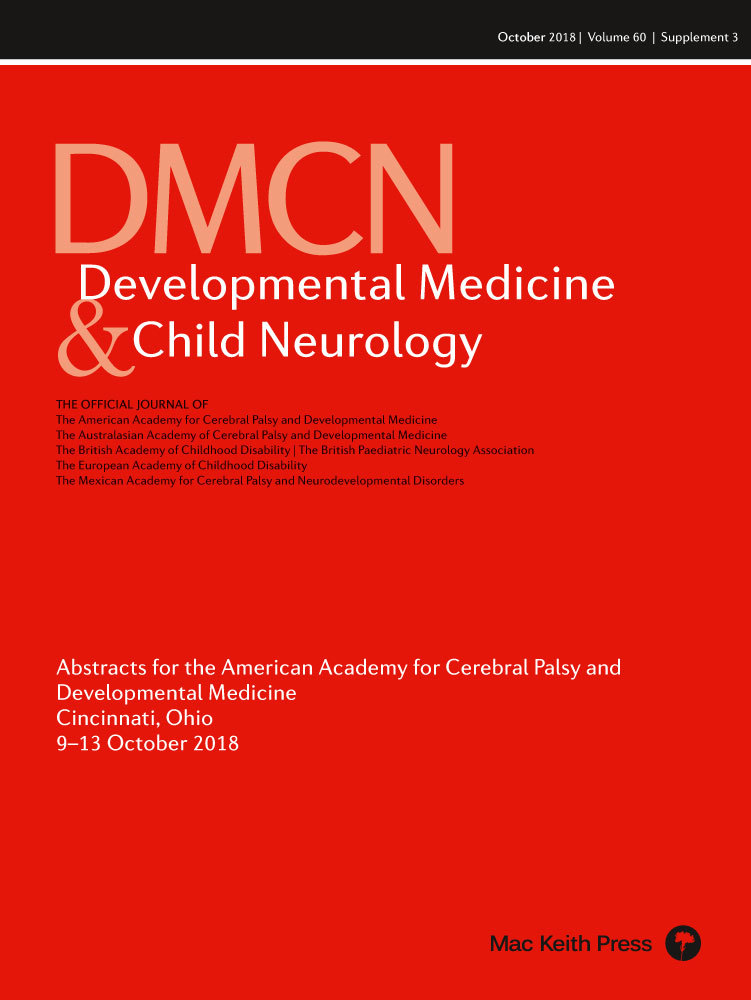Combination of early neonatal MRI scores and clinical assessment findings determine motor outcome at 12 months corrected age in infants born very preterm
I4
J George1, R Ware2, S Fiori3, J Fripp4, K Pannek4, S Rose4, P Colditz5, R Boyd6
1The University of Queensland, Queensland, Australia; 2Menzies Health Institute Queensland, Griffith University, Brisbane, Australia; 3Department of Developmental Neuroscience, Stella Maris Scientific Institute, The University of Pisa, Pisa, Italy; 4Health and Biosecurity, The Australian e-Health Research Centre, CSIRO, Brisbane, Australia; 5University of Queensland Centre for Clinical Research, The University of Queensland, Brisbane, Australia; 6Queensland Cerebral Palsy and Rehabilitation Research Centre, The University of Queensland, Queensland, Australia
Background and Objective(s): A structural MRI scoring system evaluating brain injury and growth impairment early in the neonatal period (29–35 weeks postmenstrual age; ‘Early’) determined motor outcomes at 12 months corrected age (CA) in a cohort of very preterm born infants1. This study aimed to identify which combination of structural MRI and concurrent clinical assessment scores i) Early, ii) at term equivalent age (TEA) and iii) at 3 months CA were associated with motor outcome at 12 months CA.
Study Design: Prospective cohort study of infants born <31 weeks postmenstrual age (P).
Study Participants & Setting: Early MRI was conducted at a median 32 weeks P in 103 infants (n=60 male; median gestational age at birth 28 weeks and 2 days). Of these, 97 had a second MRI at a median 40 weeks and 2 days P. Concurrent clinical assessment was conducted after each MRI and included Hammersmith Neonatal Neurological Examination (HNNE), NICU Neonatal Neurobehavioural Scale (NNNS) and General Movements Assessment (GMs).The Premie-Neuro was performed Early and Test of Infant Motor Performance (TIMP) and a visual assessment were performed at TEA. At 3 months CA infants underwent GMs, TIMP and a visual assessment.
Materials/Methods: Motor outcome was assessed at 12 months CA with the Bayley Scales of Infant and Toddler Development 3rd edition. Multivariable regression models were constructed, and the most applicable model at each time point to determine motor outcomes at 12 months CA was identified using the Bayesian information criterion.
Results: Variables included in the Early model were MRI deep grey matter score (regression coefficient β=-3.77; 95% confidence interval CI=-6.48, -1.06), HNNE abnormal signs (β=6.53; 95%CI=2.43, 10.63) and HNNE reflexes (β=3.66; 95%CI=1.13, 6.19). The TEA model included the MRI global score (β=-1.50; 95%CI=-2.19, -0.82) and NNNS stress summary score (β=-45.17; 95%CI=-80.25, -10.09). The 3 month CA model included GMs (β=-17.25; 95%CI=-26.20, -8.30) and the TIMP (β=3.60; 95%CI=0.59, 6.61).
Conclusions/Significance: A combination of MRI scores and clinical assessment findings were more strongly associated with motor outcome than either MRI or clinical measures alone, early in the neonatal period and at TEA. At 3 months CA, a combination of GMs and the TIMP was more strongly associated with 12 month motor outcome than either of the tools alone. The PPREMO toolbox has identified which structural MRI and clinical markers predict motor outcome at 12 months CA in infants born very preterm.
Reference: 1. George et al. 2017 AJNR. 38 (7) 1435–1442




